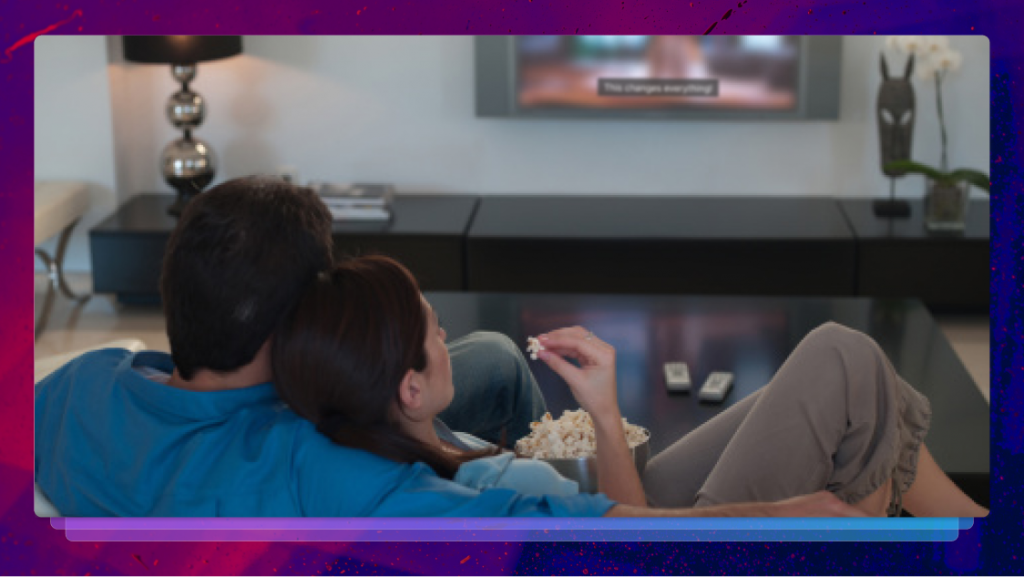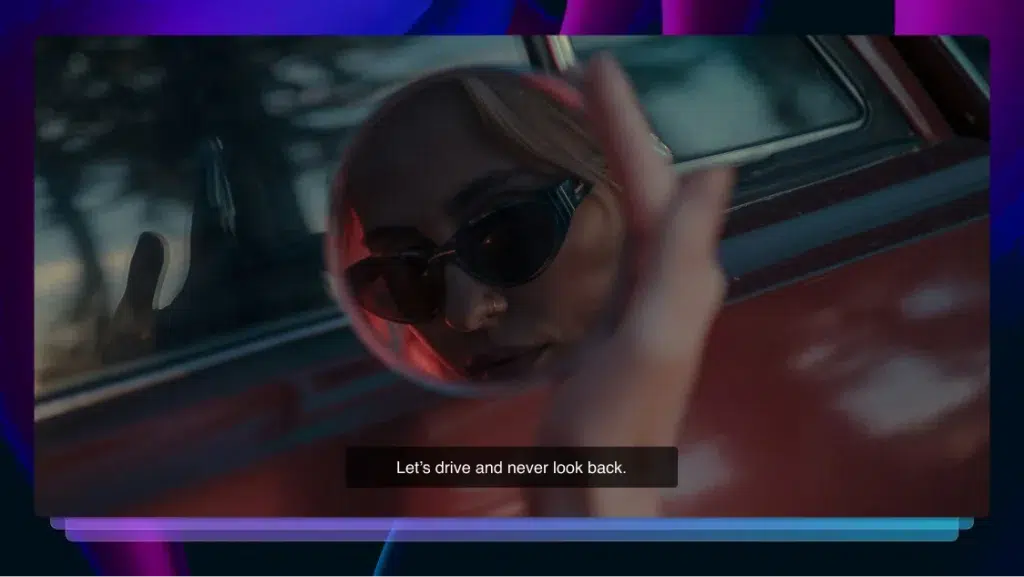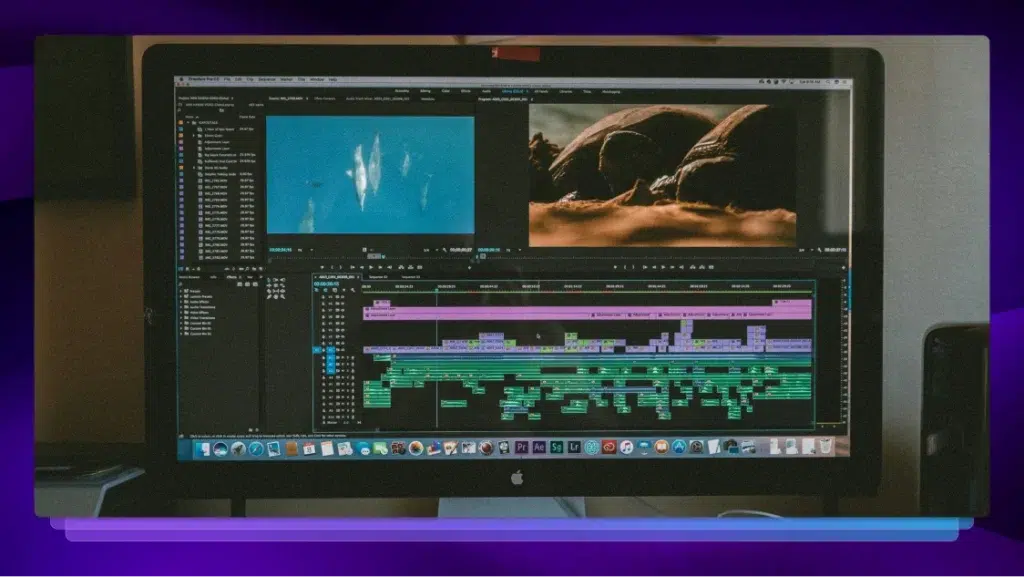Communication Access Real-Time Translation (CART Captioning) 101
Learn what Communication Access Real-Time Translation (CART) is and how it makes spoken communication accessible for everyone.

Captioning is a vital service that increases accessibility to video content, most notably — but not exclusively — for the hearing impaired. Captions have made a positive impact on those with autism, ADHD, and other disorders for more than 50 years. The simple act of turning audio content into text opens a world of possibilities for potential viewers.
While closed captions are the most commonly used, Communication Access Real-Time Translation, or CART captioning, has become increasingly important in recent years. But what, exactly, is CART captioning, and how is it different from closed captions? Read on!
What are CART Captions?
CART captioning is a form of live transcription in which a human captioner transcribes the audio of a broadcast as it’s happening.
CART captioning is also sometimes known as Computer-Aided Real-time Transcription Services in addition to its “true” full title, Communication Access Real-Time Translation. Whatever you call it, the CART signifier is that captions appear as plain text on viewers’ screens in real time, making the event, seminar, or meeting more accessible for everyone in attendance.
CART captioning can be sent to a single user’s monitor or device, projected on a screen for all to see, or broadcast to everyone’s devices. Communication Access Realtime Translation can make your event compliant with the Americans with Disabilities Act (ADA) while expanding your reach and accessibility.
What Is the Difference Between Closed Captioning and CART Captioning?
The primary difference between closed captioning and CART captioning is that closed captions are almost always embedded in a video, while CART captions take the form of raw text. Generally speaking, closed captions are created over a pre-recorded video, while CART captions almost always take place live.
Still confused? We don’t blame you. Let us help by breaking down the differences in the real world:
You know your favorite streaming service’s “CC” function? Or have you seen those notations before a move that say “closed captioning for the hearing impaired?” Those are referring to closed captions. They run along the bottom of your screen as the video is taking place.
CART, on the other hand, is a text-only visual aid that is almost always used for live events. It’s verbatim, word-by-word text that appears as a speaker says the words. CART captioners are often stenographers or court reporters who can type accurately up to 225 words per minute.
ADA Rules for Captions and CART Requirements
The Americans with Disabilities Act (ADA) was enacted in 1990 to provide protections for people with disabilities in a physical environment. Since then, the ADA has expanded to include digital accessibility, web accessibility, as well as other real-world accessibility situations that weren’t predicted in the 90s.
Captioning is mandated by the ADA as follows:
- Each caption should hold one to three lines of text on screen at a time, and should not exceed three lines
- Captions should have an accuracy of 99%
- The captioning font should be similar to Helvetica
- Background noises, or non-speech sounds, should be added in square brackets
- Punctuation and both lower and upper case letters should be used
- Captions should reflect slang words used in the audio
There are slightly different rules for CART captioning:
- CART captioning is always verbatim
- If an organization receives federal funding, it must provide CART services if a person with a disability requests it
- It’s recommended by the National Court Reporters Association that a CART captioner is a Certified Realtime Captioner (CRC) with experience as a real-time court reporter, and can write at a minimum speed of 225 words per minute
Benefits of Accurate CART Captions
CART captions must be accurate because they are often the reader’s only interpretation of the words being spoken. Whereas some captions allow for paraphrasing or non-verbatim transcription, CART captions need to be word-for-word as they are spoken so that the viewer can interpret the words in their own way.
The FCC has dictated that captions should be 99% accurate. If only to avoid potential legal trouble, you should strive for accuracy. But accurate captions bring plenty of other benefits for both you and your viewers, including:
- Clarity: You want your audience to understand what you are saying. Jumbled or incorrect words take the viewer out of the experience and make them doubt what you are saying.
- Trust: If a viewer trusts that what they are reading is an accurate representation, they’re more likely to attend another lecture or come to another event.
- Accessibility: Simply put, CART captioning makes your engagement appeal to a wider audience.
Benefits of Closed Captions
Closed captions make videos more accessible to people who are deaf, hearing impaired, or have other conditions like autism, ADHD, or auditory neuropathy. But closed captions also make your video more accessible to…everyone, really. People who aren’t native speakers of the audio language can use the text to back up what they are hearing. Anyone who can’t access the sound in an app can use closed captions to get the most from a video.
Best Practices for Using Captions
When using captions, you are essentially adding an accessibility tool. Most often, a caption is used so that the viewer doesn’t have to rely on sound. That said, you’re now asking the viewer to use sight over sound, so those visuals need to meet certain requirements. Here are a few things to consider when formatting captions:
- Captions should be left-aligned
- No more than two lines per caption
- Stick to a font that is close to Helvetica
- Reading speed should be about three words per second
- Contrast is important. The words should be visible at all times, so use a translucent box if needed
There are some additional best practices to consider when working with CART captions specifically:
- Display the CART captioning in a way that is visible to as many people as possible
- Consider font size and contrast. The letters should be big enough to see and they should stand out from the background
- Leave enough time for captions to be read, with at least two lines on the screen at once
- Consider using additional hearing assistive technology like FM compatibility, infrared technology, or induction loop systems that work with hearing aids
- If possible, ask speakers to enunciate clearly and speak slowly
Types of Captioning Services
Though the main types of captioning services are CART transcription and closed captions, there are nuances within each service that muddy the waters when it comes time to decide what you need.
In general, if the event is live, you’d likely (but not always) choose CART captioning. If the video is pre-recorded or if the captions must be on top of the video as opposed to separate text, you’d choose close captions. Below is a breakdown of the different types of captioning services.
Human CART Transcriptionist
A human CART transcriptionist is often an experienced stenographer or court reporter. They provide the most accurate real-time captions because they are able to correct typing mistakes in real time.
They are generally certified by the National Court Reporters Association and often use their own equipment suite that includes a stenotype machine, computer, and real-time transcription software. They type as fast as the speaker speaks, and their words are instantly displayed on a screen or screens for others to read.
Human CART transcriptionists are most often utilized when a live event needs to be captioned. Lectures, conferences, town halls, support group meetings, and even concerts have become more accessible thanks to CART captioning, which can be done on-site or remotely.
If your event or meeting is live, you’ll likely want to go with a CART caption professional. If it’s pre-recorded, closed captions would most likely work.
Closed Captioning Services
When you’re working with recorded video, or if your live project will use words on top of the video as it happens, you need closed captions.
A good closed-caption service like (not to toot our own horn here) Rev offers a number of ways to create those captions. Our human captioning services are 99% accurate and a good fit for public-facing videos that need to be perfect. Our AI captions are available in 38 languages at a lower cost and with quick turnaround times. We also offer live captioning via AI.
When looking for a captioning service, accuracy and reliability are musts. Cost and turnaround time are important in most cases as well. For some projects, security can come into play, so be sure to check if your service offers any form of encryption. Finally, make sure that your chosen service can deliver your files in the format you need for your project.
Captioning You Can Trust
Captioning is a very specific need, and not every service is equipped to deliver what you’re looking for. Rev’s speech-to-text services make it simple and affordable to provide inclusive content and adhere to accessibility laws. Maximize your content’s value and increase your reach with Rev’s human-made closed captioning services.















